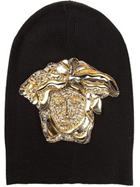The works emanating from fashion designers and the fashion industry are products of applied intellectual acumen, creativity and skill; all these are intellectual properties capable of protection.
While some of the big players of the fashion industry in India such as “MANISH MALHOTRA, TARUN TAHILIANI, RITU KUMAR, FAB INDIA and BIBA” have taken measures to protect their IP most of them are lagging behind. Yet, many small and medium-sized enterprises pay little attention, if any, to protecting such intellectual assets.
In the current business environment, the primary source of competitive advantage for those in the fashion industry is innovation and original creative expressions. Businesses need to identify such valuable intangible assets in a timely manner, determine their business relevance, and agree on those to be protected and leveraged through the IP system.
In the international scenario lot of importance is being attached to the intellectual property protection by the fashion designers and the same are accurately and promptly protected.
For example, IP rights can exist in an number of creative elements in an article, such as repeating patterns, fabric designs, colours, the overall design or shape of an article, innovative design elements such as zippers, ornamentation and specially designed or technical fabrics etc.,
Some interesting examples are:
The Hermès Kelly Bag and the new Hermès Plume Bag - Hermès is one of the top ten users of the Hague System for the international registration of industrial designs with hundreds of designs registered through the System.
 Versace’s medusa motif-
Versace’s medusa motif- The Vera Wang wedding dress-
The Vera Wang wedding dress- Dr. Marten’s boots -While fashion trends may come and go in the blink of an eye, some never pass. Some of them become classical pieces.
Dr. Marten’s boots -While fashion trends may come and go in the blink of an eye, some never pass. Some of them become classical pieces.
1. “Kelly” Bag, which grew to fame in 1956 after Princess Grace Kelly of Monaco appeared carrying the bag on the cover of LIFE Magazine.
2. The classic Chanel suit – designed by Coco Chanel in the 1930s – is still sold today, for US$5,000 a suit.
Many fashion houses strive to create such classic design pieces. When they succeed, if they have not obtained the appropriate IP protection in time, imitators will be able to ‘free ride’ on their creative work.
Following IP Tools can be used for protection of IP in the Fashion Industry
Copyrights
Design or decoration applied to fabrics or objects to make them aesthetically pleasing or having ornamental quality can qualify for copyright protection.
Eg: Fabric patterns; images affixed to garments; materials, embroidery, beading, lace, etc., affixed to garments; jewelry designs; and some fanciful costumes are, in fact, eligible for copyright protection.
Brands, Tradedress, Tradenames and Trademarks
The logos and names, the cut or shape of garments, can be protected as trademarks.

Eg: Patents:
Newly invented materials used in the manufacture of fashion items or luxury goods, innovative methods of manufacturing these goods could also qualify patent protection.
Eg: Thula – an organic fabric, mulka-mix of khadi and mul fabrics, speedo swim wear – fabric specially designed for swimmers.
Designs
Among the range of IP tools, the protection of industrial designs is the most relevant to the fashion industry. Ornamental or aesthetic aspects can be protected under Design rights, which may relate to a three-dimensional feature, such as the shape of a hat, or a two-dimensional feature, such as a textile print.
Counterfeits and Fashion
It is important to keep in mind that Counterfeits are a significant concern, particularly in the luxury and fashion industry. IP regime is one of the best tools among others to keep a check on counterfeits. IP rights can be enforced and thus rights can be protected.
Fashion Law
The conceptualization of fashion law as a distinct legal field is relatively recent. Though, the term may sound relatively new in the Indian scenario, it’s been actively practiced for quite some time in other jurisdictions of the world. Fashion law is a legal field encompassing issues that arise throughout the life of an article of clothing or a fashion accessory. Fundamental issues in fashion law include intellectual property; business and finance, with subcategories ranging from employment and labor law to real estate; international trade and government regulation, including questions of safety and sustainability; dress codes and religious apparel; consumer culture; privacy and wearable tech; and civil rights. Fashion law also includes related areas such as textile production, modelling, media, and the cosmetics and perfume industries.
Fashion and Luxury products should be sufficiently protected, considering the rapid evolution of fashion; huge financial stake; creativity and not to forget the risk of counterfeits plaguing the fashion industry.






